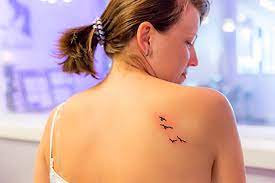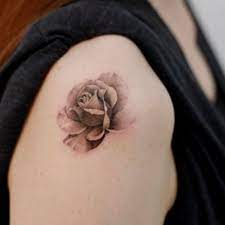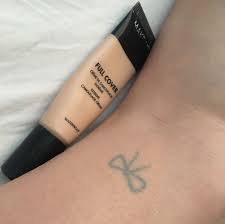
Redness and Inflammation
After getting a tattoo, it is normal for your skin to become red and irritated due to trauma caused by needles during the tattooing process. This redness and bruising usually don’t cause alarm. They result from the needles penetrating your skin’s layers, prompting blood-generating systems to send blood directly into the tattooed region. It is a natural response to neutralize foreign substances in your bloodstream.
Tattoo reactions that cause more severe symptoms often extend beyond the immediate tattooed area. An allergic reaction can produce a red, bumpy rash that may become itchy. Other symptoms could include shortness of breath, dizziness, and stomachache. Some individuals may experience granulomas, which are nodules that appear at the tattoo site. A dermatologist must diagnose this condition before antibiotic treatment is prescribed.
Pain
Pain is normal after getting a tattoo, but if it lasts more than a few days and intensifies, it could indicate a mild infection. Scabs that turn dark red, yellow, or green and smell bad may also indicate an infection. Conditions often include itching, fever, chills, and abnormal pus oozing.
Burning sensations are familiar with freshly applied tattoos, especially with more extensive or denser designs. Adverse reactions to tattoo ink are less frequent but still possible, mainly if you are sensitive to certain dyes used in tattooing or have allergies to hair dye or costume jewelry.
Itching
Itching is a normal part of the healing process but may worsen at specific times during the day. It should subside over time. Avoid picking at scabs that form on your tattoo, as this can result in scarring and slow down the healing process. Applying moisturizer 1-2 times daily can help alleviate itching.
To relieve itching, you can place a thick cloth over the tattooed area and gently graze your fingertips over it. Be careful not to tear or scratch the tender skin with your fingernails. Cold compresses or ice packs may also provide temporary relief.
Swelling
Swelling is not typically part of the healing process but may occur for various reasons. Tattoo needles piercing different layers of skin can activate the immune system, and an infection could contribute to itching and swelling. If you have an allergy, tattoo ink could be the source of itching and redness due to its chemicals and ingredients. Different types of allergies can lead to itching, small bumps, pus-filled blisters, and swelling near the tattoo site. These reactions could be caused by substances found within the ink or due to autoimmune responses triggered by antibodies present within the ink or in your body.

